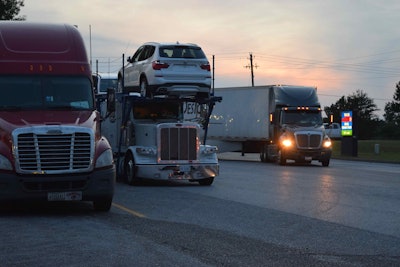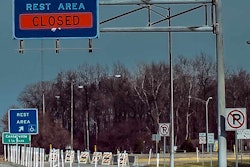“We all know that capacity is the biggest issue.” —Marygrace Parker, Truck ‘N Park project coordinator with the I-95 Corridor Coalition
In case you needed reminding, I think there’s a reason all we tend to hear about around the parking issue is related to ways to deliver information about space availability (outside of the occasional new truck stop announcement).

The news, according to this story from the Warrenton, Va., Faquier Now news source, showed a fair amount of resident opposition to the Virginia DOT trucks-only rest area project, which planned as recently as last month to break ground this fall. In our analysis, published in December of 2015, Virginia ranked 16th in the nation among states among those most in need of additional capacity. The rest-area project is planned as a stop on the WB side of I-66 near Markham — 30 spaces, a drop in the bucket, really, with an eight-foot fence around the area, portable toilets and downward-focused LED lights to avoid an overabundance of glare in the area.
With the move, the state comes full circle of a fashion. It’s Virginia in large part, you’ll remember, that helped spark and galvanize truckers’ engagement on the role of public facilities in the truck parking scrum when it planned to — and then reversed after much advocacy on the part of drivers — close a large portion of its rest areas during the recession years. If I’m right, this project would be the fourth such rest area opened statewide since that time, as the pop-out from Virginia in the following interactive map makes clear:
For further exploration from this part of the December 2015-published nationwide parking analysis, follow this link.
On this particular project, opposition was pretty simple to come by, however. One resident of Fairfax farther afield, but who had a home in the area, collected more than one hundred signatures against the project that he presented at a recent public meeting about it. Opposition why, exactly? It all comes down to some familiar themes:
“Truck noise, fumes and” the aforementioned lighting, wrote Faquier Now reporter Don Del Rosso. “Irreparable environmental, scenic and wildlife damage.”
Unlike the case of Redneck Diesel in Texas, most objections were less to do over residents’ health than that of wildlife in the area. And truckers’ need for rest? VDOT determined after studying their own parking issues in the wake of Jason’s Law that the I-66 corridor needed 500 additional spaces to satisfy the need for parking there. Del Ross quoted Chris Marshall, owner of a 10-truck milk-hauling fleet located in the area. Marshall underscored the problem as a safety issue for truckers and the public:
“After midnight, there’s trucks parked everywhere. There’s not enough (rest area parking) for these trucks.” —Chris Marshall, via Del Rosso’s reporting at this link
Thirty spaces toward satisfying a need for 500 isn’t much, as I intimated, but Marshall called it all “a good start.” Here’s hoping VDOT gets it off the ground.










